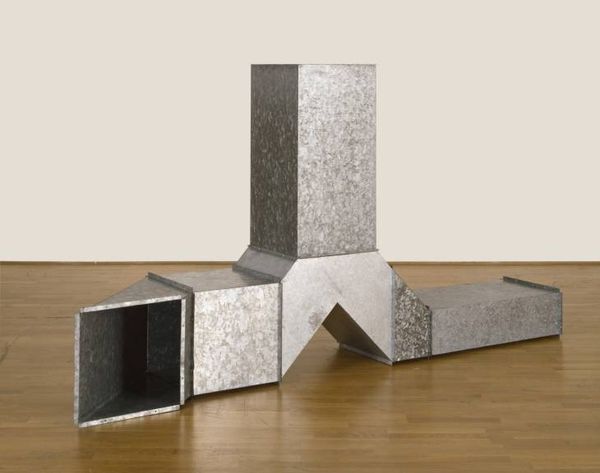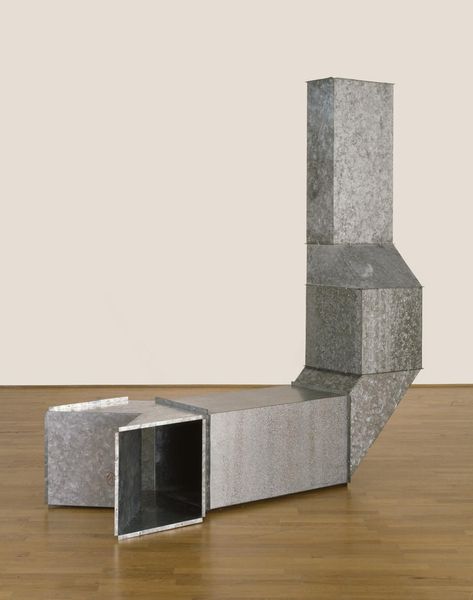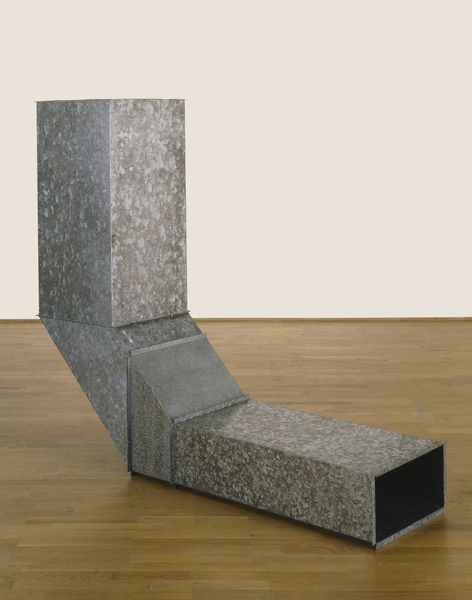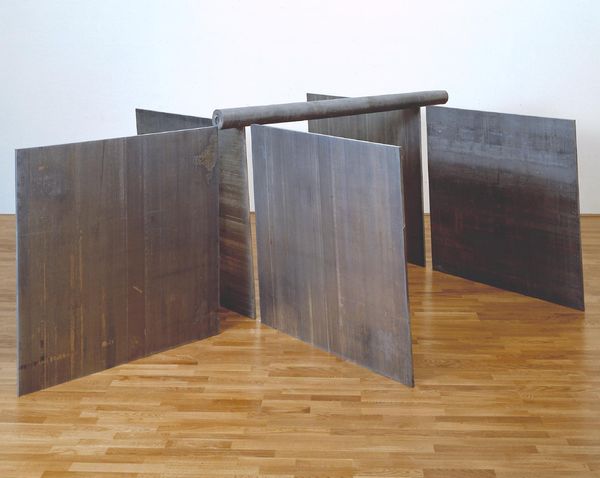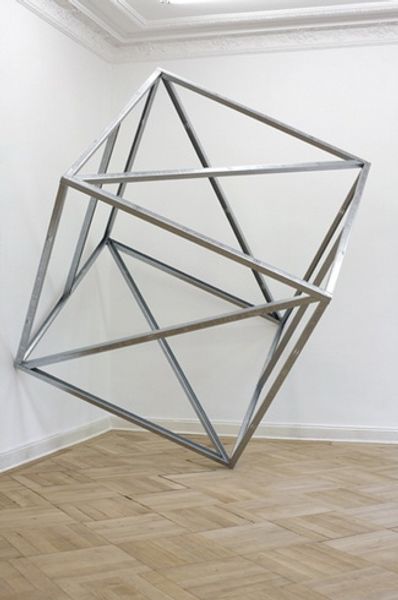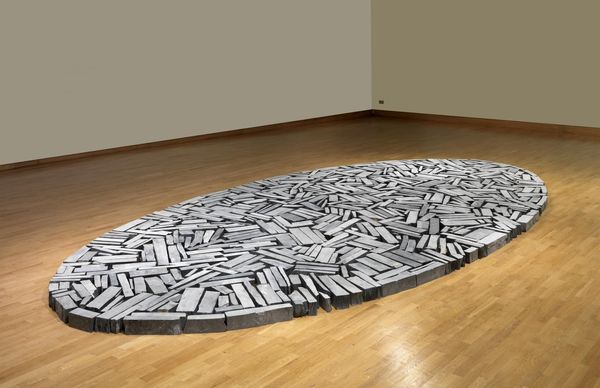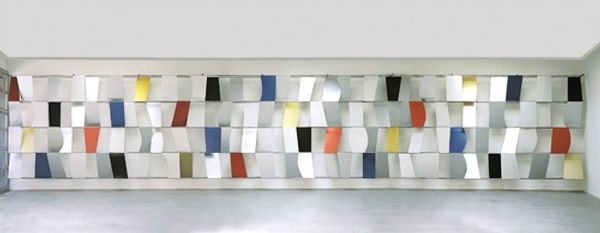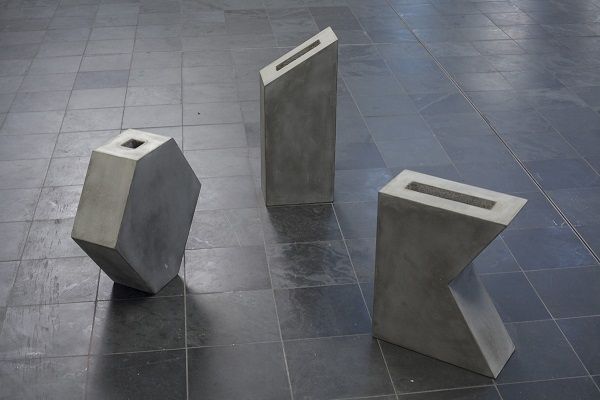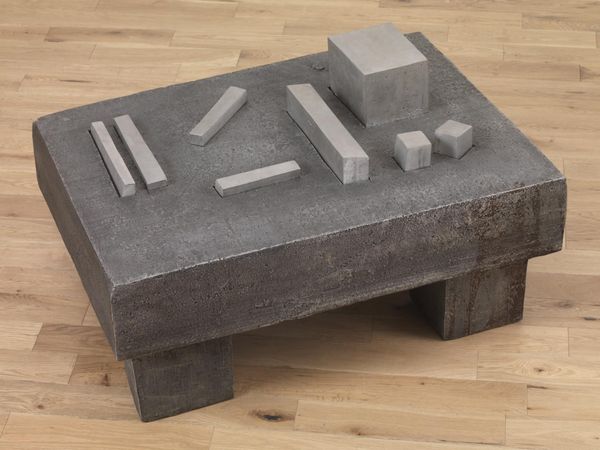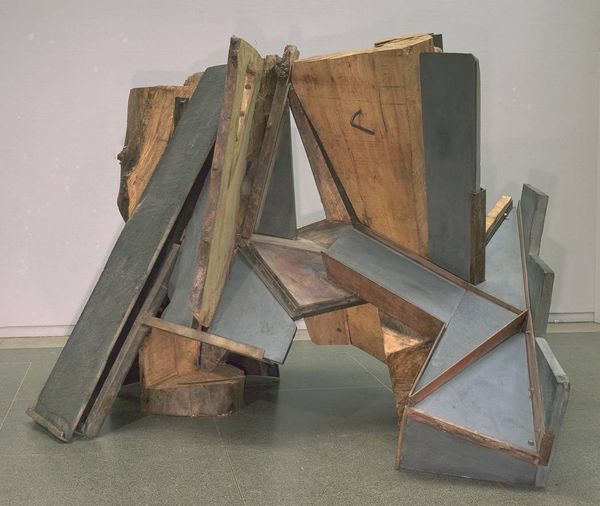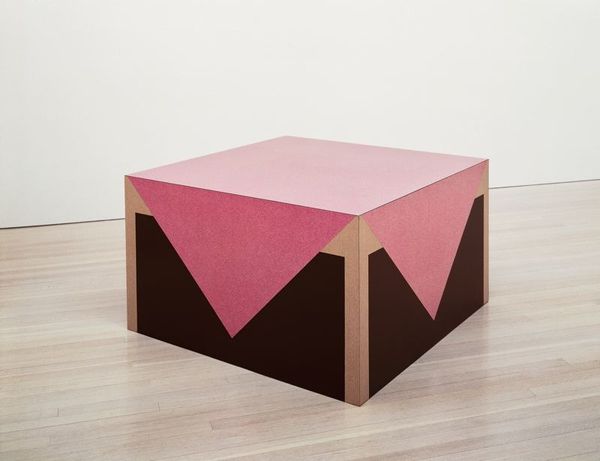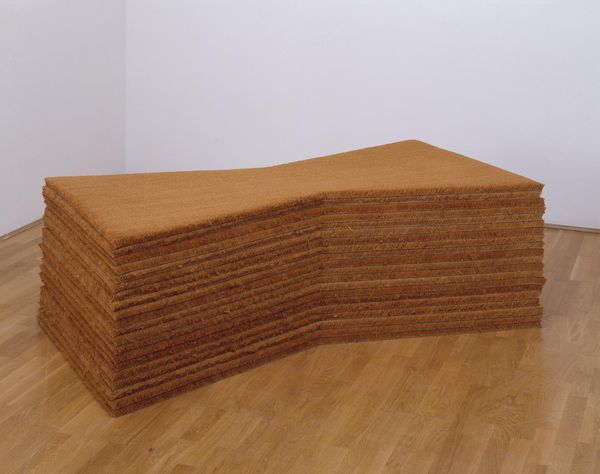![Square Tubes [Series D] by Charlotte Posenenske](/_next/image?url=https%3A%2F%2Fd2w8kbdekdi1gv.cloudfront.net%2FeyJidWNrZXQiOiAiYXJ0ZXJhLWltYWdlcy1idWNrZXQiLCAia2V5IjogImFydHdvcmtzLzM1NjJiZjk0LWEwMDYtNDUzZC1hNzY2LTQ2ZDIzMmZhNzc3MS8zNTYyYmY5NC1hMDA2LTQ1M2QtYTc2Ni00NmQyMzJmYTc3NzFfZnVsbC5qcGciLCAiZWRpdHMiOiB7InJlc2l6ZSI6IHsid2lkdGgiOiAxOTIwLCAiaGVpZ2h0IjogMTkyMCwgImZpdCI6ICJpbnNpZGUifX19&w=3840&q=75)
Dimensions: Six elements: square tube: 460 x 460 x 920 mm; rectangular tube: 230 x 460 x 920 mm; cubic tube, 460 x 460 x 460 mm; angular element, opening: 460 x 460 mm; transition element, openings: 460 x 460 and T-piece, openings: 460 x 460 mm Overall displa
Copyright: © Estate of Charlotte Posenenske/Burkhard Brunn, Frankfurt/M. | CC-BY-NC-ND 4.0 DEED, Photo: Tate
Curator: Here we have Charlotte Posenenske's "Square Tubes [Series D]," a modular sculpture from the 1960s. Editor: It looks like an enormous metal puzzle, or maybe discarded ventilation shafts. Cold and industrial, yet… somehow playful. Curator: Posenenske embraced industrial materials like galvanized steel, inviting viewers to reconfigure the elements. Its all about challenging traditional art notions, isn't it? Editor: Precisely! The focus shifts from the artist's hand to the pure geometry and the interplay of forms. The modules negate any prescribed viewpoint. Curator: It's less about what the artwork *is*, and more about what it *could* be. It's a rather poetic proposition, isn't it? Editor: Indeed. Posenenske's dematerialized art, as some have called it, certainly leaves a lasting impression. Curator: It does make you rethink sculpture and space. Editor: A true testament to the power of simple forms.
Comments
tate 6 months ago
⋮
http://www.tate.org.uk/art/artworks/posenenske-square-tubes-series-d-t12775
Join the conversation
Join millions of artists and users on Artera today and experience the ultimate creative platform.
tate 6 months ago
⋮
Posenenske was interested in industrial methods of production, and produced free standing sculptures which often resemble standardised architectural units. Square Tubes Series D, consists of a number of folded, hollow elements which are joined together to create different shaped pieces, according to the owner’s decision. The tubes can be hung or placed on the floor in numerous configurations, and the physical organisation of the elements can be altered each time they are exhibited Gallery label, October 2016
